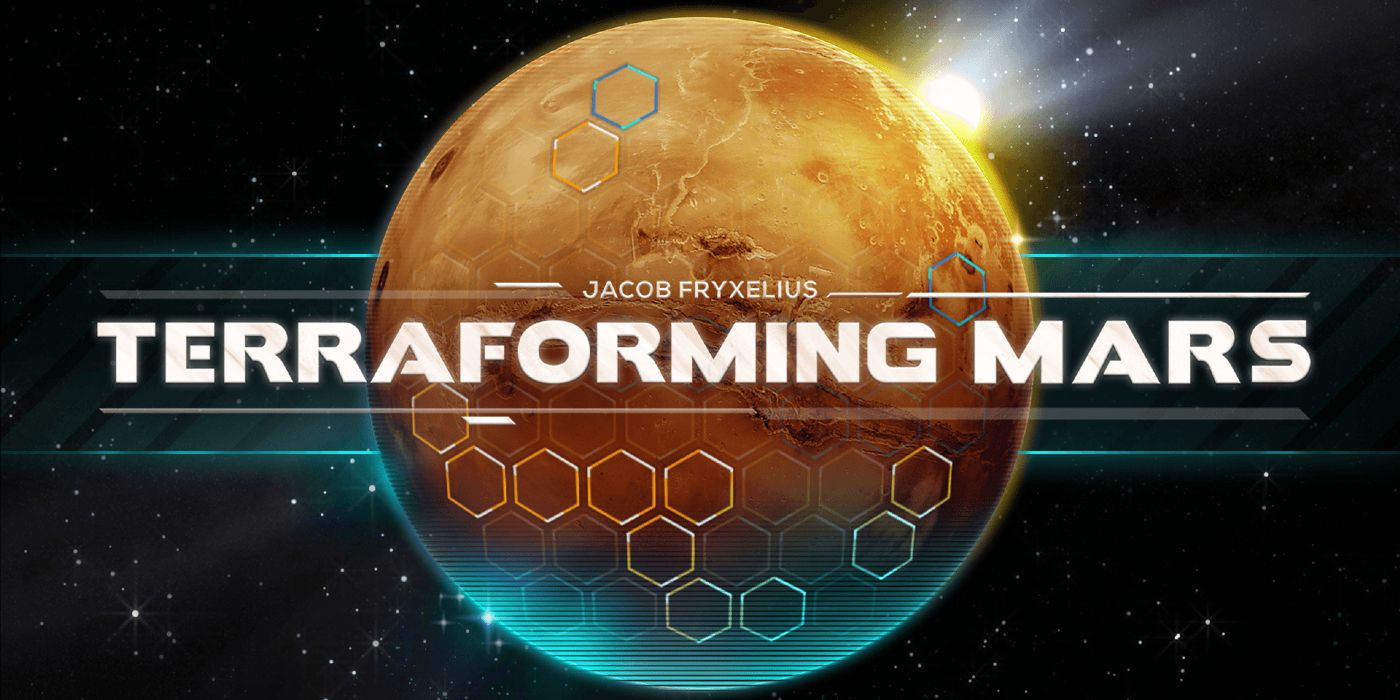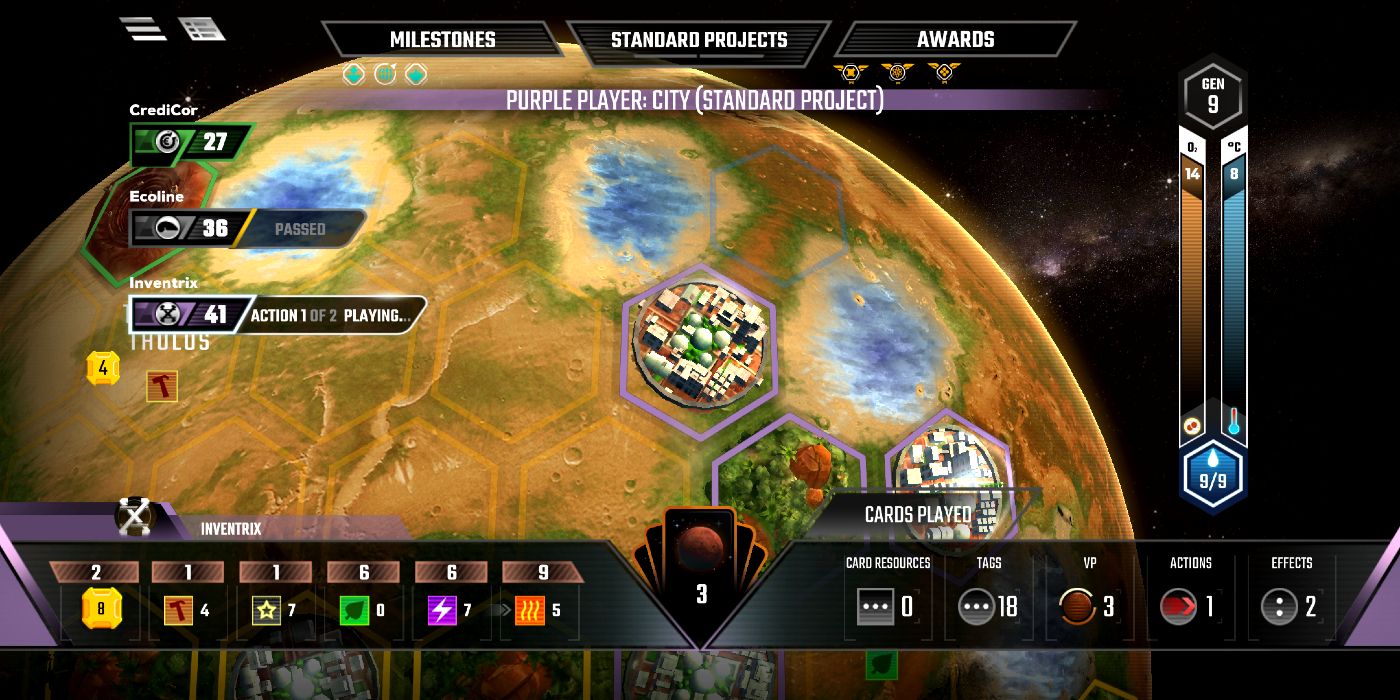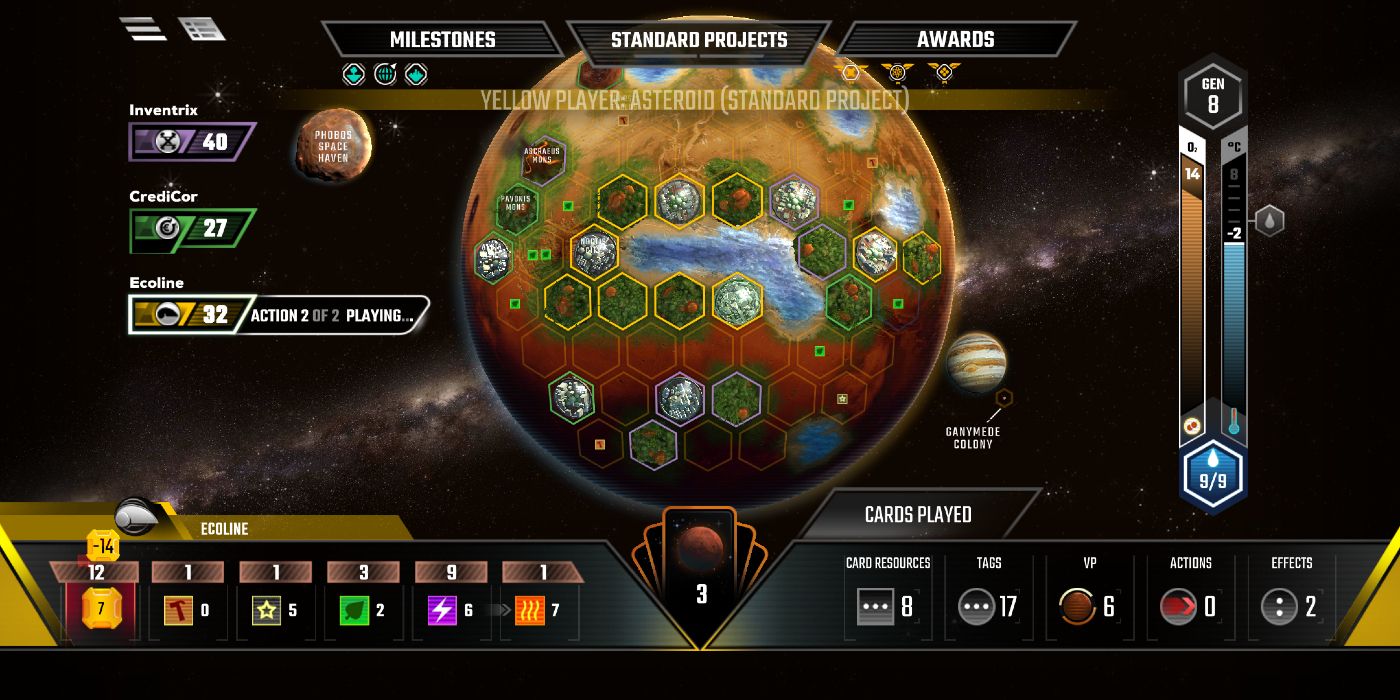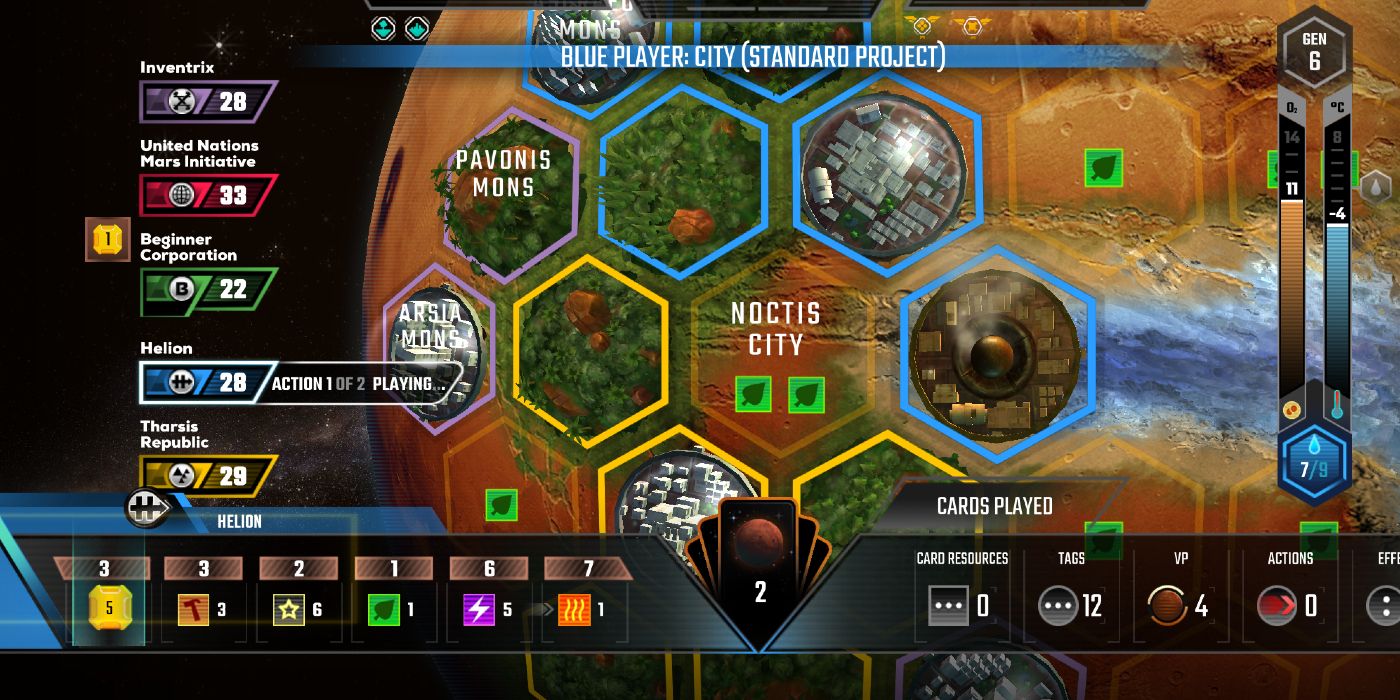Terraforming Mars on Android and iOS devices plays quite similarly to the game's original physical board game version, but with the added bonus of portability. While not the easiest game for inexperienced players to pick up and enjoy without prior explanation of the rules and a small training session, once everyone involved knows what's going on Terraforming Mars can become an enjoyable way to pass the time.
The ultimate goal of Terraforming Mars sees players tangentially working together in order to bring life to the planet Mars by raising the planet's temperature and oxygen levels until it's considered to be safe both for animals and the majority of the human race. Players (of which there can be up to five) take control of corporations and spend their time funding projects, placing domed cities and open forests, and calling down asteroids from the sky in order to, well, terraform Mars.
While all of Terraforming Mars' players have the same endgame goal, their secondary, more competitive task is to be the corporation which accomplishes and contributes the most to the red planet's evolution. Actions are represented by purchasable projects and playable cards, and by placing things like oceans, forests, and cities onto Mars' hexagonal grid players can increase their corporation's Terraforming Rating, thus giving them more money to execute actions with in the following round. Some cards offer immediate bonuses, some offer game-long benefits, and some can be used to screw over other players at the last minute by stealing their resources.
There are a lot of things to keep track of while playing Terraforming Mars. Steel, heat, energy, and everything else affects which cards players are able to utilize during the game, with many of them containing certain oxygen or heat restrictions which make them unplayable after a certain point during a match. For instance, a player might have a card named Permafrost Extraction which pulls water out of the surrounding ice, but if Mars' temperature has already risen to a certain level there will be no permafrost around for the machines to extract, meaning the card is worthless. While unplayable cards can be sold for a measly amount, it's much better for players to study their hand carefully each round and pay attention to their current resources and temperature levels, lest they risk wasting a chance to up their Terraforming Rating.
Resources serve a number of important purposes in Terraforming Mars. Not only can they act as prerequisites which much be acquired before certain project cards can be played, but they also are all tallied up at the end of the game and added to the player corporation's final score. Additionally, things like steel can be used to decrease the cost of certain building cards, and plant resources can be converted into playable forest tiles.
Players take two actions per turn, alternating one-by-one and lasting until every player runs out of available actions, at which point the round, or Generation, is considered over, and the player order is reshuffled to make the first player last, second player first, the third second, and so on. Balancing which actions to take when, such as the decision between building a city or erupting a volcano, is key to building a proper corporate hold on Mars' new ecosystem, as neglecting any one section of the game's various manageable areas for too long will surely see another player stepping in to pick up the slack.
Like many of the best tabletop board games, Terraforming Mars can be a lengthy experience, even in the shortened "standard game" mode. Players can compete against AI or human opponents, engage in solo challenges, and compete against other users online. Thankfully, in the single-player-versus-AI matches the game pauses when the app is interrupted or closed, meaning a forty-five minute game's progress isn't lost if the player receives an unexpected and unavoidable phone call. However, it doesn't appear as if there are multiple slots for saved games, so anyone hoping to show Terraforming Mars to their friends might want to be sure to finish off any remaining computer matches first.
The game is quite beautiful in its simplicity, visually speaking. While most of the actual gameplay of Terraforming Mars is relegated to menu hopping and card playing, the hexagonally-divided planet game board on which the action takes place is strikingly detailed, with cities, trees, and volcanoes erupting from its surface in a way reminiscent of multiple city-builder video games. It's not excessive or as animated as it could be, and it doesn't reach the level of visual spectacle National Geographic's Mars TV show does, but it effectively recreates the original physical board from which the video game is based on and adds enough visual flair to make things interesting.
The only true problem Terraforming Mars has is that it's quite a complicated game to jump into blind, meaning it will be hard to convince a group of friends to play unless they are all willing to go through the game's multi-step tutorial together. Another smaller issue, which saw the player's deck being opened unnecessarily multiple times, was caused by the confirmation box of various menus being placed indirectly over the player's card icon, meaning any stray finger movement causes the latter menu to open instead of actually hitting the confirmation key. While a minuscule problem, it's something which happened enough times during gameplay that it bears repeating, especially since it would have made much more sense to have the background be inaccessible during these menu selection times.
Unlike the mobile version of the Monopoly board game, this is not only a faithful adaptation of the original product's tabletop experience but also a seemingly glitch-free one, and although some players familiar with the Risk and Axis & Allies-style game genres may find Terraforming Mars' base experience rather easy, playing the title with other people on a similar skill level or against the harder AI settings should prove a challenge to even the more experienced tabletop gamers.
Terraforming Mars isn't for everyone. Players looking for action-based titles can happily pass on by, and even fans of Mars-based city building games like The Farlanders need to know they're getting into something with a pretty steep learning curve. However, for those players willing to learn the rules, for anyone who's dreamed of making the red planet hospitable for both animal and human life, Terraforming Mars is a detailed, strategic experience which applies the best elements of resource management and offers a nicely varied amount of challenge to both new and returning genre fans.
As a final aside, there is a desperate lack of video games like Terraforming Mars, ones which focus on construction, creation, and the preservation of life rather than the destruction of it. With the ever-looming threat of worldwide climate change and a real, legitimate push for human migration possibilities to include other planets like Mars as an alternative, games like these not only bring the conversation to people who may not have been aware of it before but also explores how such goals could be accomplished, albeit in an abstract and entertaining way. Such depictions of future events are a good indication humans are at least on the right track, and if playing Terraforming Mars inspires even one person to take an interest in the real, functional aspects of the game as a career, it will be to the benefit of everyone.
Terraforming Mars is available on Android, iOS, and Steam. A Google Play code was provided to Screen Rant for the purposes of this review.




